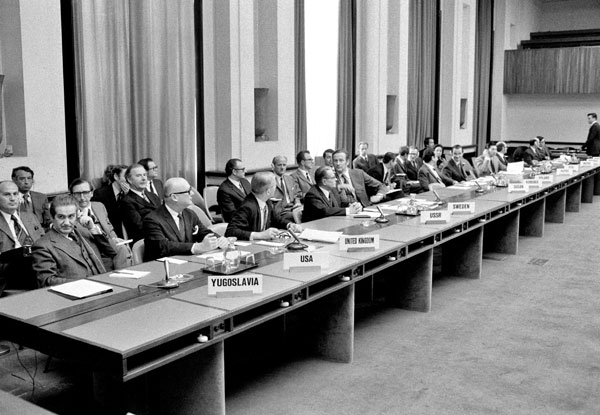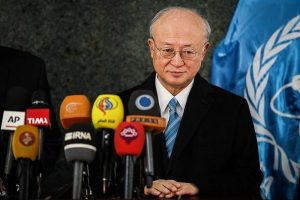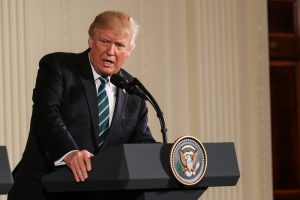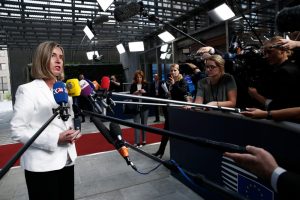by Peter Jenkins
An article in the latest issue of the International Security journal goes to the heart of US and European nuclear non-proliferation policy. The author, Scott Kemp, an Assistant Professor of Nuclear Science and Engineering at MIT, raises a fundamental question: is proliferation best prevented by supply-side measures (attempts to restrict the availability of certain technologies) or by influencing the demand side (the national interest calculations that underpin decision-making on nuclear weapon acquisition)?
The question has divided the US nuclear community since 1945 and is unlikely to be resolved by this one article, well-researched and highly intelligent as it is. Nonetheless, Kemp’s conclusion merits substantial debate, not least in the wider foreign policy community. It is that a rebalancing of nuclear non-proliferation policy is advisable, away from over-dependence on supply side restrictions and towards greater reliance on influencing states’ motives and calculations.
Kemp justifies his conclusion by surveying the extent to which controlling one type of nuclear technology — the use of centrifuges to enrich uranium — can be relied on to limit the spread of nuclear weapons, and by demonstrating that controls have been and will be porous and permeable.
Technological and industrial developments since 1945 have moved the proliferation-potential boundary outwards to where the building of a uranium enrichment plant lies within the reach of many states. The required information has long been in the public domain. The tools and equipment needed to build rudimentary centrifuge machines are unsophisticated. The risk of remote detection of a small clandestine plant is small. Thirteen of the twenty states that have built enrichment facilities have done so without recourse to outside help — and several others could have gone it alone.
Kemp is careful to distinguish between over-reliance on technology controls and denying that controls have any merit. He is not advocating the elimination of controls. On the contrary, he recognises that controls can make the task of building and operating centrifuges more arduous by forcing states to develop the technology indigenously and to spend time troubleshooting the challenges that will inevitably arise. Controls can also limit the ability of states to build high-performance centrifuges.
But where centrifuge technology is concerned, Kemp’s sympathies clearly lie with Niels Bohr, Robert Oppenheimer, and other Manhattan Project scientists who warned that controls could only provide a temporary hurdle, not an insurmountable barrier. Like them, he also believes that enduring protection “can only come from the political organization of the world”.
Mercifully, much of that political organization now exists, thanks to the Nuclear Non-Proliferation Treaty (NPT), which entered into force in 1970. Early doubts about how effective a barrier the NPT would be have been confounded. All but the four nuclear-armed states (Israel, India, Pakistan and North Korea) and South Sudan, which has had more pressing priorities, are parties to it. Only nine states are known or suspected of having engaged in clandestine nuclear activities after becoming parties; and all but two of those (Iraq and Syria) have chosen or been persuaded to abandon their clandestine activities well short of nuclear weapons acquisition.
Why has the NPT been so effective? Kemp leaves that question to be answered by others. My sense is that NPT parties see mutual security benefits in maintaining this regime for as long as possible, certain grievances notwithstanding, and have no appetite for engaging in a nuclear arms race with their neighbors. An element of deterrence may also enter into the equation: latecomers to the nuclear-armed clubhouse cannot be sure of getting in unscathed.
But I hope someone more qualified than I will undertake the thorough assessment Kemp calls for at the end of his article:
While the specific causes of proliferation abstinence lie beyond the scope of this article, the subject clearly merits deeper analysis by both policymakers and academics as such factors are probably the most viable basis for the future of the non proliferation regime.
More immediately, Kemp’s conclusion begs important questions in relation to the current negotiations between Iran and the P5+1: if technology restrictions can never be more than a hurdle to centrifuge-based nuclear weapon acquisition, is it essential that the US and EU insist on a dramatic cut in the number of operating centrifuges at Iran’s disposal during the interim phase of a comprehensive solution?
Would the US and EU be wise to walk away from the negotiation if, for domestic political reasons, Iran were to refuse to dismantle any of its 19,000 centrifuges and to operate any fewer than 9,000 at any one time?
Should the US and EU be ready to close the deal if Iran can demonstrate convincingly that it has no interest in acquiring nuclear weapons — with no motive for incurring the near-universal condemnation that a nuclear “break-out” would trigger — and backs up the demonstration by accepting that verification of its nuclear program can remain at current levels indefinitely?
I know what I think. But what, I wonder, do the US administration’s “counter-proliferation” experts think, and what advice are they giving to the US secretary of state and president? I fear they may be on the other side of the post-1945 divide.
Photo: The first meeting of the Preparatory Committee for the Review Conference of the Parties to the NPT, United Nations, Geneva, Switzerland on April 1, 1974. Credit: UN






Another good article on the subject of Nuclear awareness. It seems that there’s always somebody willing to sell the technology to somebody who has the money to pay for it. Once the Genie was out of the bottle, I don’t need to continue. I do hope a peaceful solution to Iran’s situation occurs without any warfare, which I’m sure will disappoint some others who would rather risk war, than reach said solution.
And yet again Peter Jenkins must be reciting into a mirror since he obviously recycles his own policy positions on Iran. He ignores the basic rule of industrialization which is cost vs. scalability. In Iran’s case, the issue has never been about enriched fuel stockpiles or even technology capability. It’s all been about enriching infrastructure. Iran’s 19,000 older centrifuges were a significant limiting factor in its ability to create weapons grade fuel. But since Iran has been adamant about not only keeping that infrastructure, but expanding it with another 30,000 next generation and more efficient centrifuges, the reality is that Iran’s nuclear capability would be doubled. Jenkins blithely ignores how technology advancements can make the threshold for obtaining warheads easier, faster and cheaper which is why nuclear talks have stalled and will eventually fail since Iran will never cave on its centrifuge capability.